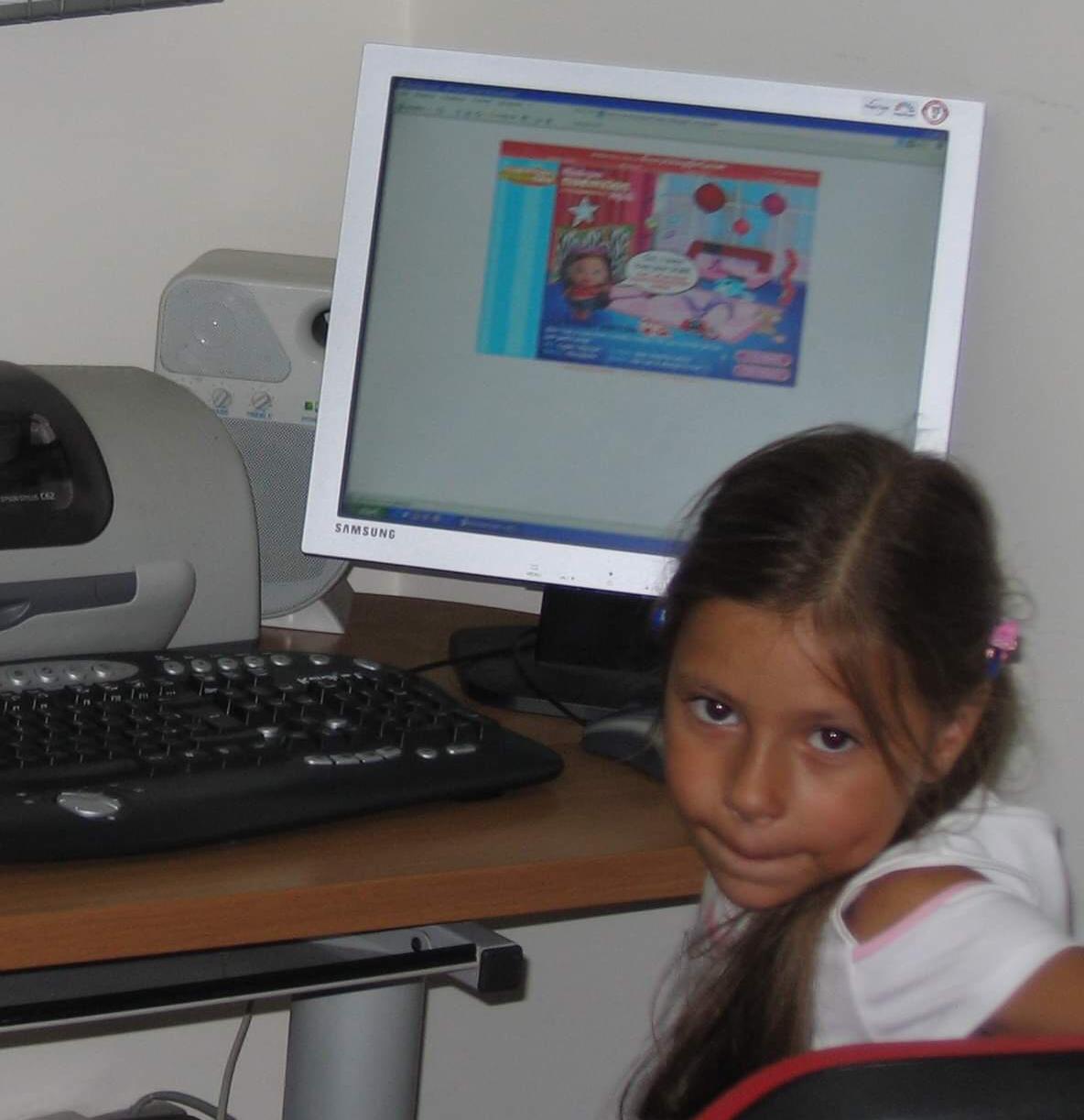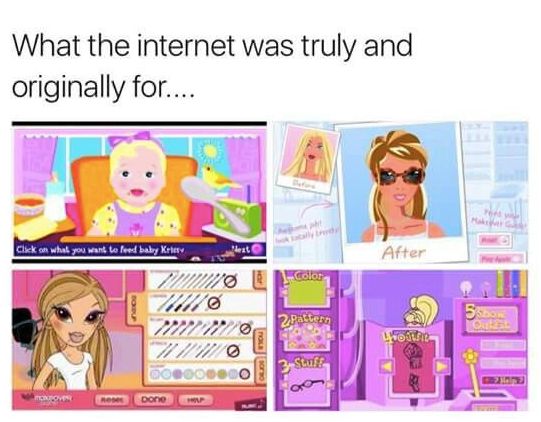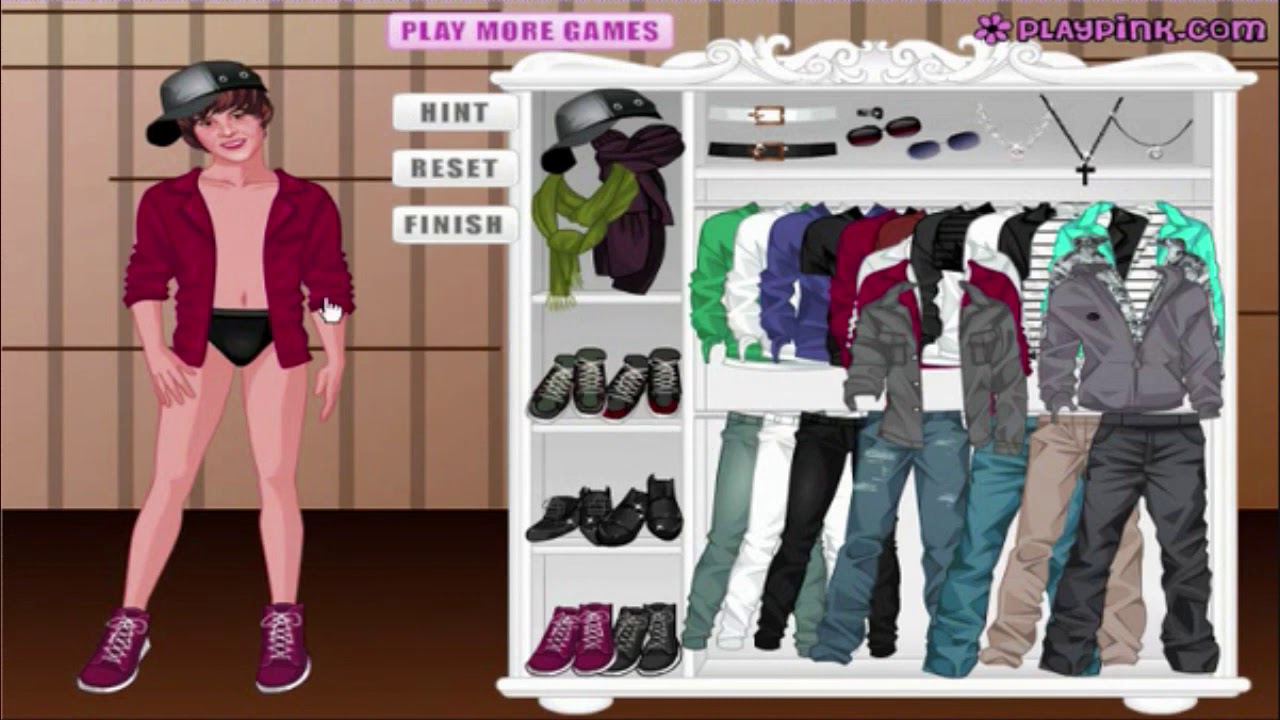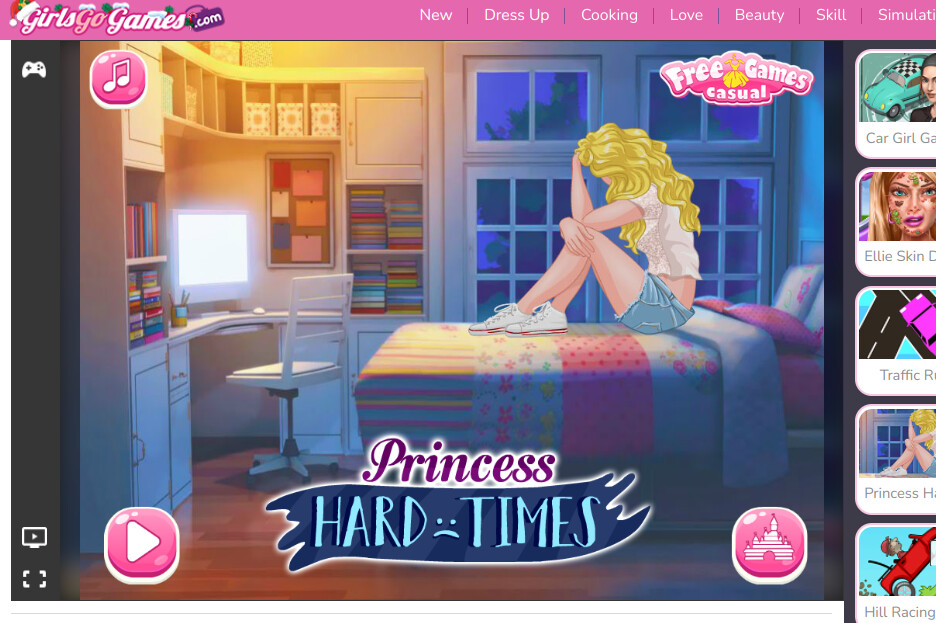Phenomenology Of Flash Games
-There are two opposing views of technology. One, that it is of us, and the other that it is not us. The following is my view that it is us. The technium is necessary for us to be fully human. As we create art, invent social structures and map the universe we discover who we are. Without these inventions— even simple ones like poetry, clothes, fire, and hand tools—we don’t know anything about ourselves. Technology not only reveals our humanness, it is the way we are human. We create our humanness by creating the technium.
-(Kelly 2004)
On “Unkanny”, we have faced multiple time the concept of the Internet swiftly turning from an intrinsically cyber space into a manifestation of our own mental one. This theory is generally indicated with the term VCC, which stands for “Virtual Internet unconscious” and was coined by behavioural scientists Yousri Marzouki and Oliver Ouille. Putting its roots in Jungian’s philosophic notions of the Universal Unconscious and its correlate of Archetypes, VCC is recognised as a phenomenon in which a large group of people share collective emotions and experiences within the internet, colliding the physical world with the virtual world and creating impactful shared intelligence that transcends both. The internet becomes an extension of our consciousness and, as defined by writer Shaikat Hossain, “A powerful force of growth and self actualisation” (2012).
This because through our almost pre disposition to explore the web at an extremely young age (my earliest internet memory is from 2003 or 2004, I was exactly 5, and I knew how to google myscene.com and navigate the glittery graphics as if it was an innate instinct), with barely any supervision as the Gen X Parents were learning how to deal with a LAN connection along their kids, Zoomers learnt about themselves and their likings, revealing a humanness that the internet consciously or subconsciously provided.
And it was mostly through Flash Games: free, online animated computer games which surged in popularity in the early two thousands.
In this article we analyse what was the appeal of Flash Games and the relevance they had in Gen Z’s childhoods, by reflecting on how Nostalgia can sometimes distort our perception, Gender stereotypes in the gaming world, simplistic graphics recall a more simplistic lifestyle, and the d

Photo of me from 2005 on the DIVASTARZ flash games website
THE BIRTH OF FLASH
The early 2000s were characterised by the mystical boom of portable consoles: you had the Nintendo DS, The Play Station Portable, the Nintendo Gameboy Advance and some unremarkable knock-off flops like the N-Gage console. These handheld gaming systems had children (and adults) in a chokehold. To be able to have entertainment on the go was the ultimate dream for the post “millennium bug" society, vacillating at the edge of a technological revolution.
Despite the massive success, there was something rather important that these consoles were lacking: the accessibility. There was only so much time in the day to dedicate to them, with the limitations of game cartridges. And at the time, the retail price for one Nintendo cartridge was £35.99. Since kids do not have a stable income, it was clear that in order to have more games, parents had to be persuaded. It was expensive to be constantly buzzed.
This was until the dawn of the Flash Games.
Their beauty was that they could be accessed and played everywhere with a stable internet connection and on every available operating system. But most importantly, they provided hours of entertainment at absolutely no cost. As “Expanded Cinema” author Gene Youngblood foresaw back in an Art Show catalogue from 1982:
“A tool is mature insofar as it’s easy to use, accessible to everyone, offering high quality at low cost, and characterised by a pluralistic rather than singular practice, serving a multitude of values. Professionalism is an archaic model that’s fading in the twilight of the Industrial Age.”
Back in the 1990s, a new programming language under the name of “ACTION SCRIPT” was developed, which permitted creators to create content and games for browsers. These games would later be able to be accessed through a site called “HotJava”.
When HotJava gaming websites rose in popularity around 1997 (You had multiplayer! And Tennis! And… Pool?) the Big Dogs of the industry, such as Microsoft, decided to jump on the bandwagon. But their strategy was unsuccessful, as it required people to download data onto their computers in order to play the game, making it less accessible than it could be on HotJava.
When Flash popped up on the scene in 1995 (back when its original name was Future Wave Software), permitting digital creators to animate their creations frame by frame on a visual interface, rather than directly though code, the industry sharks fought to purchase it and eventually gave it up to Adobe, who renamed the then “FUTURE SPLASH ANIMATOR” to “Adobe Flash”.
Flash was so game-changing because until then programming seemed like an impossible language to decrypt. Thanks to its intuitive scripting language, it encouraged experimentation with graphics and animation tools, and opened the doors for inexperienced and young creators to delve into a world that they thought they could not access.
The advent of Flash catalysed the birth of internet powerhouses such as Tom Fulp’s NewGrounds (Where the “Numa Numa” viral video was uploaded on before exploding on YouTube 2 years later), Miniclip, AlbinoBlackSheep, Girlsgogames and Friv. A plethora of Flash content was uploaded on these portals at a break-neck speed by several content creators, and they became an infinite database of entertainment for 2000s kids worldwide to turn to on their Home Computer.

"I am this old" flash game meme format
THE FLASH EPIDEMIC AND GAMING STEREOTYPES
The legacy Flash Games actuated the modern gaming industry, and distribution was extensive.
It should be noted that the rampant growth in their popularity was also due to the rapid spread of information on the internet in the early 2000s, mainly thanks to word-of-mouth (or keyboard) work through the very first instant messaging software (Messenger, AIM), E-mail and social media platforms. Links to SWF files were being shared across the Internet in no time. Perhaps there was a moment when there were more flash games you could play on the internet than humans on the planet.
In other words, we were hooked.
With Flash Games you could choose from a vast array of different gaming genres. The games were not always graphically impressive, and they relied on the core aspect of the gameplay more than the aesthetics.
You had reskins of already existing games such as Sonic The Hedgehog, Super Mario and Pac-Man (which usually had ridiculous names to hide the *cough cough* copyright infringement). Then there was a plethora of Platform Games, Puzzles, Shooter games, Cooking simulators. You had Habbo Hotel, a grotesque avatar-based chatroom where children dabbled in scams by trading virtual currencies and property for real money. Indeed, if boiled down, the whole game was run by a consumerist philosophy, with virtual commodities playing the same roles in society as material ones. Club Penguin did that a few years later too, but the avatars, being cutesy colourful penguins, managed to disguise the more malicious intentions of some of its users.
An honourable mention goes to: Quizzes, Love Meters, and, a personal favourite, the highly problematic Kissing Games, to which a whole section of gioco.it was dedicated.

Office Kissing Game (2006?)
Furthermore, there were the Dress-Up games, whose fashion was, although questionable, the most representative of the early 2000s and 2010s.
The internet was awash with websites, such as Girlsgogames and Stardoll, fully dedicated to the Dress-Up genre. These defined theera of online games just as much as portals like Newgrounds, as they would relate to a demographicof primarily (but of course not necessarily) young girls.
This is important because until then, gaming had been fiercely marketed for boys, and the proportion of female gamers was much lower because they had nothing advertised to them in the traditionally feminine way, which is the complete opposite of what was the violent and hyper-masculinised world of AddictingGames.com.
In 2012, game developers Spilgames published a report “proving” to the world that, shockingly, girls (more precisely, 7.6 million pre-teens) played games too! And most importantly, girl games could provide a “significant opportunity for advertisers to reach an engaged and lucrative audience”.
So yeah, in other words, Tween Girls = Capital.
Even though there was (and there is) nothing wrong or shameful in enjoying the traditional femininity Girlsgogames embraced, many critics have affirmed that these portals would only provide a wider gender gap and reinforce stereotypes. Why advertise cooking games to a female audience and War Simulator to the male one? And why is it assumed that one way of gaming is “better” than the other?
The sociological volume From Barbie to Mortal Kombat: Gender and Computer Games (1998) analyses the phenomenon of consciously pursued demographics by video-games promoters and how violent, male-targeted games have dominated the market for decades, causing females not to be “attracted” by computer games because they were not advertised to them. This does not imply that they didn’t enjoy playing them, because many did, and others might have, only their exposure to “boys’ gaming” was indirect compared to their male peers, as the “culture seemed to forcefully steer them away from it” (p. 12).
Furthermore, when little girls finally had a grasp of the realm of internet games, society immediately pointed the finger at them and at “girl-centred” video game developers for providing their children with “insipid” and “frilly” contentthat portrayed only one stereotype of woman. It seemed like girls could simply never win. Their taste was always to be diminished and contested, with criticism “grounded in a distaste for women’s aesthetic preferences […] rooted in the assumption that non-professional women are mindless and uncritical consumers of patriarchal culture”. Of course, assuming that the cause of this is “Dress Up Justin Bieber Game” or “Neopets” seems purely like the product of patriarchal prejudice.

Dress-up Justin Bieber Game
THE DEATH OF FLASH AND ITS LEGACY
Flash officially exhaled its last breath in December 2020, when Adobe ended supporting the browser plugin. The technical reason behind its termination was that Flash had become very vulnerable to malware over the years, making it a risky platform to run when safer options such as HTML5 and WebGL were already available. Adobe described it as a “simple evolution”.
Flash’s elimination also had to do with the declining number of players on Flash gaming platforms, as more turned to the increasingly popular mobile games and modern consoles. Sites like the ones mentioned above are still up and running, but most games are unplayable. Navigating through the unclickable icons on addictinggames.com feels like walking through a haunted cemetery, at twilight, reading the epitaph and name of someone who once was.
Just like the internet, we have also moved on from the world of Flash minigames, which is now obsolete to the newer generation that has grown up with a different approach to technology. The 2020 Lockdown saw a surge in players using Flash platforms as a mode of escapism - a way to reminisce about better days, in which the world was not ending (or at least, not until December 2012). It was a brief trend, however, terminating as soon as restrictions were eased, and Flash ceased a few months later.
I began this article by talking about the Virtual Internet Unconscious phenomenon, a digital intelligence that goes beyond our human consciousness to create a whole new dimension of memories and experiences communal to a large group of people. With the passing of time, the VCC has grown up alongside its manifesters, behaving like “a creature with an internal life" (O’Gieblyn, 2020). And it does not forget.

Zack and Cody's Tipton Trouble game from DisneyChannel.com
This is why these silly animated games hold so much emotional value, because they are an exemplification of simpler times that we all experienced as children in the early ages of the internet, which so well resonates with how simple and stripped down the graphics of the games were. It has the same feelingas flicking through a family photo album and looking at one’s baby self being cradled by a relative, everyone in the picture looking younger, fresher, perhaps happier. The VCC can provide us with the same sensation of Nostalgia that the photo album can emanate, pulling out memories from their deepest, andevery so often, most cherished recesses.
All the non-broken games left on the ex-Flash game portals are highly disturbing drag and click games tarnished with seedy advertising and nightmare-inducing thumbnails. From splinter-plucking Disney Princesses to a very Fetishised bootleg Minnie Mouse giving birth. YouTuber Laurenzside has made several videos in which she explores the rabbit hole of “Hospital Resurrection Minigames” of Frozen characters. And there are a lot.
What is very interesting is how the format of these games seems to replicate the one of mobile apps. Since the youngest generation of kids now have unlimited internet access on their smartphones and tablets, it is obvious that they will resort to the App Store instead of a laptop to find entertainment.
The apps are extremely easy to download, and they are mostly innocuous formats already established in the Flash game realms. Indeed, mobile games share the same core ideas and concepts of Flash. The main difference is the regulations that games have to go through in order to reach App Stores. Unlike Flash, where the designer could be anyone on its anarchic platforms, behind mobile games there is usually a publisher whose main objective is to collect data about its target consumers. Additionally, their advertising strategy is aggressive: a plethora of mobile games ads infest YouTube videos and the TikTok algorithm. The ads resemble the games themselves minimally, in fact they are very reminiscent of the grotesque thumbnails of the defunct Flash game websites. They are often overly sexual and inappropriate (See Danny Gonzales’ hilarious review of some of Lily’s Gardens’ most outrageous ads), relying on the graphic nature of dental procedures, surgery, or childbirth. Of course, this tingles the curiosity of all the iPad babies out there, who will unknowingly click on every single “accept third party trackers" in order to play Baddie Hair Challenge. These games are not catered to children or to creators, they are spewed out of AI-generated hell in order to track and capitalise more on vulnerable children and, curiously, their anxieties.
 A girlsgogames mini-game about depression, 2020
A girlsgogames mini-game about depression, 2020
I would like to stress, as my final point, that no, things were not better when we were snotty-nosed kids in the school computer room. And no, Gen Alpha (or late Gen Z) kids are not brainless zombies. In one way or another, both generations have been the guinea pigs of a more accessible technologies, with all the complications, scandals and misunderstandings that come with them. Although the advert-plagued skeletons of former portals and absurd phone apps feel nothing like Happy Wheels, their primary purposes are similar: to entertain.
What is truly beautiful about reminiscing through the Internet is the ability to see the shell of a former self, whether through Flash Games or another childhood staple. The fond (or traumatic) memories the web holds become a tool to understand ourselves and others, by comparing and discussing similar experiences. As we have both shared a deep connection with the Internet.
And the day for today’s 7-year-olds to discuss how messed up the ads for Piano Tiles 6 were back in 2020 will soon come to make us feel older, and wiser.

